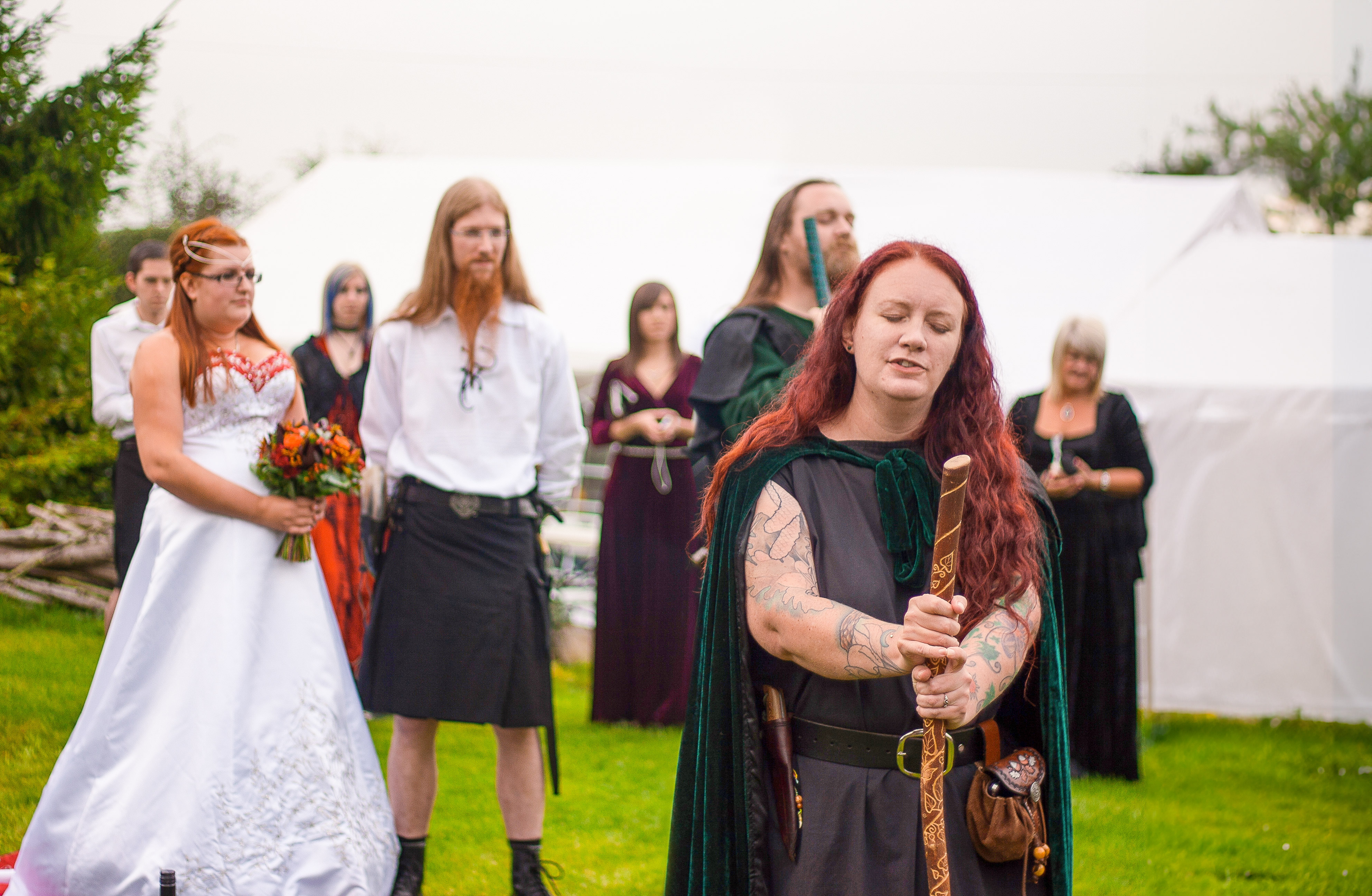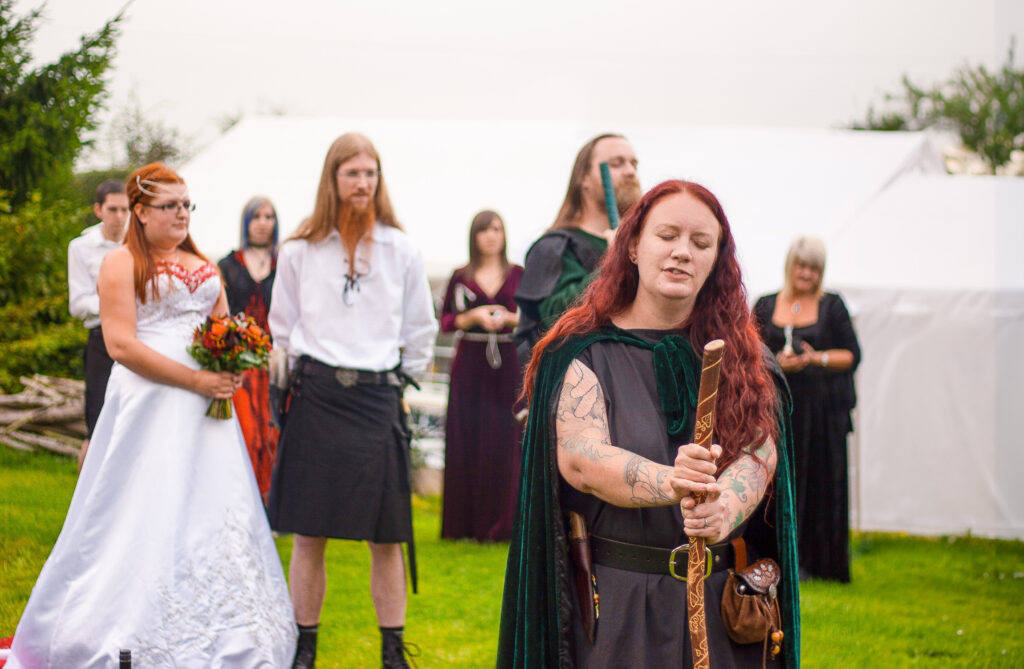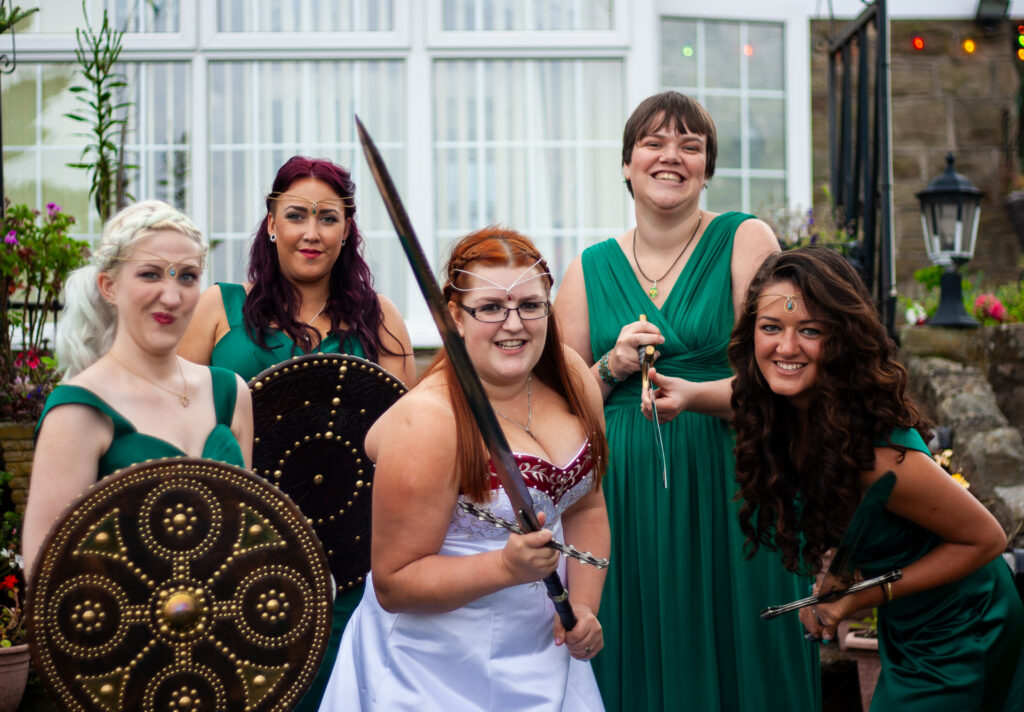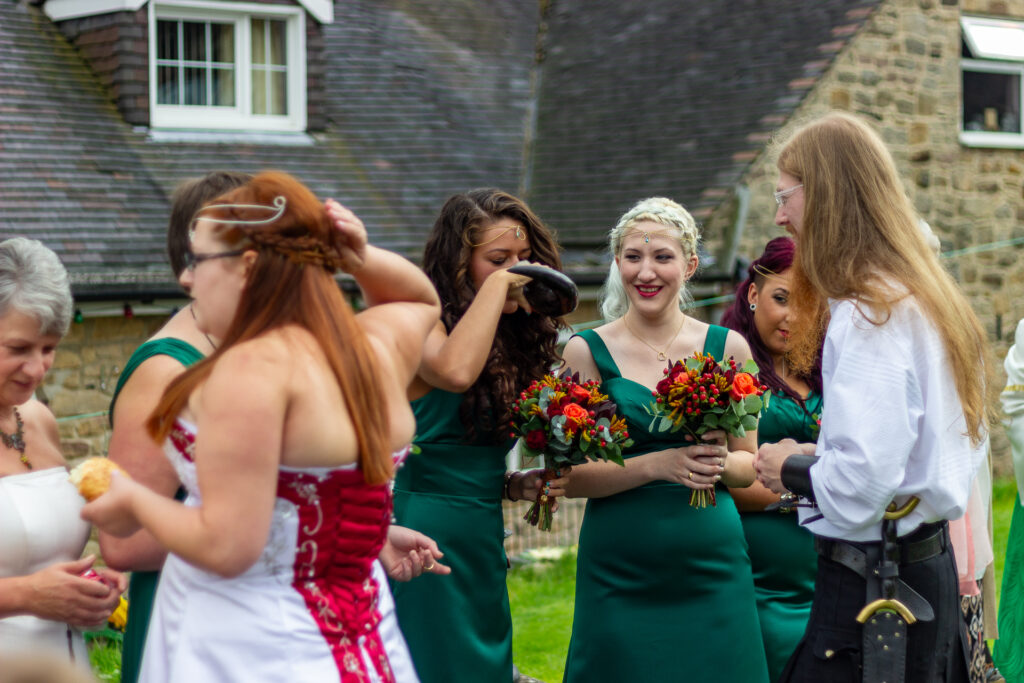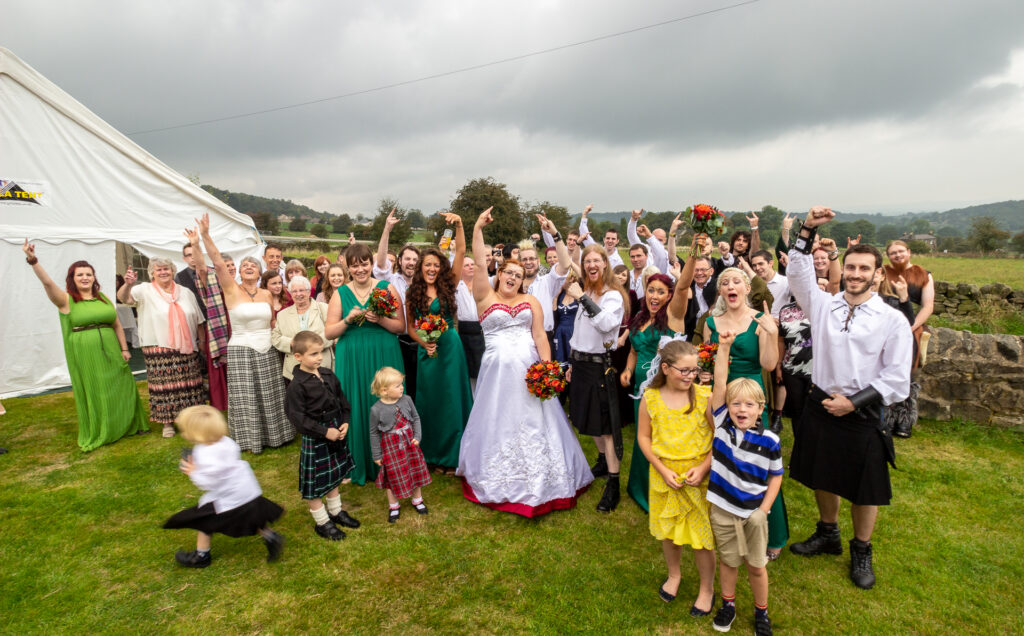The best thing about working with so many different couples is that you get to learn about traditions; some new, some old, some unique to families and some a couple have created unique to them. There are so many opportunities available for couples and not everyone opts for a ceremony in the traditional sense. The first wedding I got to photograph was a pagan wedding, an age-old ceremony which has seen a resurgence in popularity over recent years.
As the world becomes increasingly interested in diverse traditions and spiritual practices, the pagan hand-fasting ceremony has emerged as a beautiful alternative to conventional weddings. Rooted in ancient customs, hand-fasting not only celebrates the bond between two individuals but also honours the natural world and the community around them. In this blog, we’ll delve into the significance, rituals, and personal touches that make a hand-fasting ceremony truly unique.
What is a hand-fasting wedding?
A hand-fasting ceremony is an ancient Celtic tradition dating back as far as 7000 B.C. When two people chose to be married, they bound their hands together with a ribbon or a braided cord in the presence of a priest to acknowledge their engagement and intent to marry. An engagement would often last a year, at which point the couple would then repeat the ceremony and exchange vows to mark their marriage. In the 21st century, the hand-fasting usually takes place just at the wedding ceremony.
A hand-fasting ceremony can be conducted by a druid or person who performs these celebrations regularly, but it can be performed by anyone the couple chose. In the UK, the legal part of the wedding must be conducted by a registrar which means hand-fasting is flexible and can be performed to mark engagement, marriage, commitment or an anniversary.
Handfastings are commonly used in Wiccan and Pagan ceremonies but anyone can take part in the tradition. The “tying the knot” symbolism works for people of many different types of spirituality.
What is used to tie the hands together?
As with every element of a pagan wedding, your choices can be as unique as you, so that the wedding can truly reflect you and your love story.
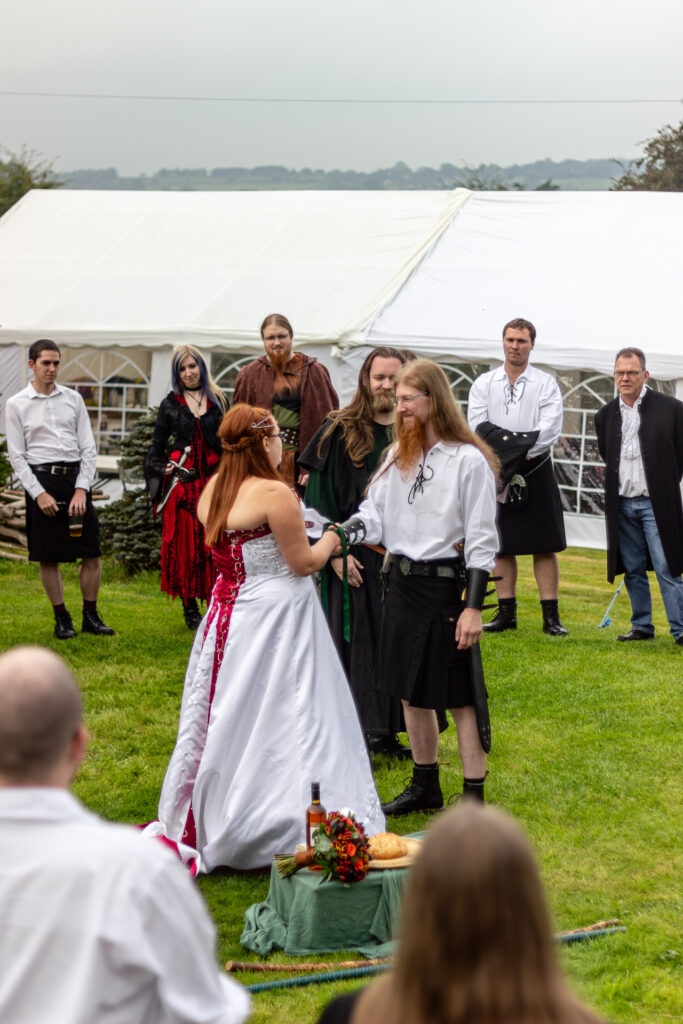
Some couples choose to have cords woven from three strands to show strength and unity. There are no rules on which colours to use so these can go with your wedding theme, or they can represent different qualities you wish to bring into your union. Some couples choose to use a material with personal significance, like a tartan, African wax fabric, vintage lace or braids made by your children. Whatever you choose for your handfasting, make it something that is personally significant to your partnership.
The Ritual Elements of Hand-fasting
The Setting: Hand-fasting ceremonies are often conducted outdoors, allowing couples to connect with nature. The choice of location—be it a serene forest, a sunlit meadow, or a tranquil beach—adds to the ceremony’s enchantment.
The Circle: Creating a sacred circle is a common practice in hand-fasting rituals. This circle represents unity and protection, serving as a space where the couple can share their vows in front of their loved ones.
The Binding: The highlight of the handfasting ceremony is the binding itself. A cord or ribbon—often made of natural materials like twine, silk, or woven grasses—is used to tie the couple’s hands together. As their hands are bound, the officiant may recite blessings or words that reflect the couple’s commitment.
Personal Vows: Couples often write their own vows, expressing their love, promises, and intentions. This personal touch adds depth and authenticity to the ceremony, making it uniquely theirs.
Blessings from the Community: Family and friends are encouraged to share their blessings or good wishes for the couple. This communal aspect reinforces the idea that marriage is not just a union of two individuals, but a joining of families and communities
Symbolic Gestures: Many couples choose to incorporate additional rituals, such as lighting a unity candle, planting a tree, or blending elements like sand or herbs to symbolise their union.
Personalising Your Hand-fasting Ceremony
One of the most appealing aspects of hand-fasting is its flexibility. Here are some ideas to make the ceremony uniquely yours:
-
Choose Meaningful Colours: Select ribbons or cords in colours that represent your intentions and values. For instance, green might symbolise growth, while blue can represent tranquility.
-
Incorporate Nature: Use natural elements like flowers, stones, or feathers to decorate the ceremony space or as part of the binding.
-
Create a Theme: Whether you’re inspired by a particular season, mythology, or a shared interest, weaving a theme throughout your ceremony can make it even more special.
-
Invite a Special Officiant: Consider having a close friend or family member officiate your ceremony, adding a personal touch and making the moment even more meaningful
Conclusion
A hand-fasting ceremony is a beautiful way to celebrate love, commitment, and the interconnectedness of life. By incorporating personal elements and honouring the natural world, couples can create a truly unique experience that resonates with their journey together. As you plan your own hand-fasting, remember that it’s not just about the binding of hands, but the binding of hearts and souls. Embrace the magic of this ancient tradition, and let your love shine brightly in the circle of life!
